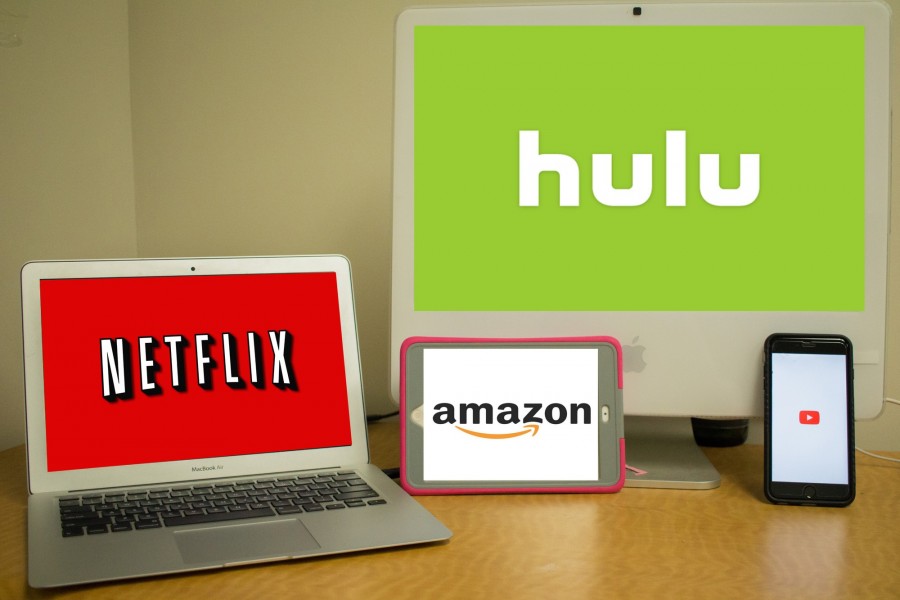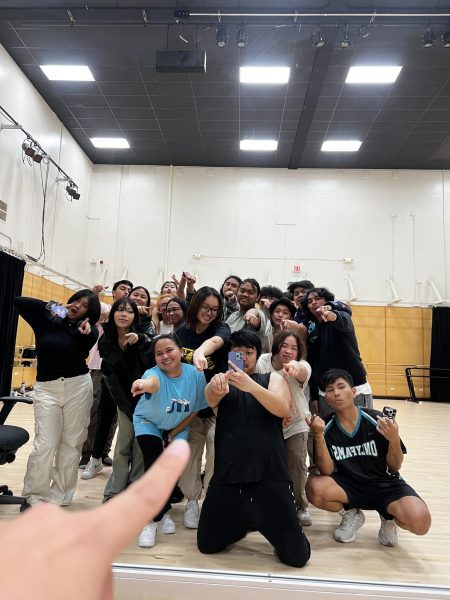Millennials abandon “traditional” TV for online streaming
Andrew Avilla/The Skyline View
Many people have left regular TV programming and now choose online streaming services such as Amazon Instant Video, Hulu, Netflix, and YouTube.
More and more people now prefer to watch content through online streaming programs or systems, instead of traditional television. Many people prefer to stream movies/shows online not only because of its high-speed quality, but because of the ad or commercial-free options and the flexible schedule it offers, allowing people to watch or “binge” watch whenever they want.
Netflix, Amazon Prime, and Hulu are the biggest and most popular programs for online streaming. For under $20 a month you can stream any movie or show you want (you can even stream music) instead of paying over $100 a month for regular cable programs, that may not include an option for you to re-watch a series (for free).
According to a Digitalsmiths report, “Netflix had 65 million members at the end of the second quarter of 2015, with 42 million members in the US.”
Netflix could be the most used programs of all; it is the cheapest out of all of them. They’ve been pretty successful within the past couple of years, not only due to their increase in streamers, but for “Netflix Original Shows.”
Netflix has created its own original content to stream, and many have turned into commercial successes. These include shows like “House of Cards,” “Orange is the New Black” and “Daredevil.” Netflix basically tailors information from their users to create a built in audience that these shows will appeal to. Hulu and Amazon Prime have not been able to create such original and high quality content that Netflix has.
Due to this new and rising trend of online streaming, regular TV programs (Comcast, Dish, etc.) have tried to come up with ways to compete with this new video-on-demand market. Comcast and Dish have tried to launch streaming services to their viewers to keep up with the competition, however Netflix, Hulu, and Amazon Prime still hold the lowest price points and offer way more content.
In this new digital era that is so consumed by social media and online streaming, it was no big shock that “traditional” TV would be less and less prevalent among the younger audience. According to a recent report done by Nielsen figures, traditional TV viewing has declined 32 percent between 2011 and 2015. Essentially, within just four years, one third of the age group’s (18-24) TV viewers have slowly moved their way to online streaming.
Online streaming is a much more convenient way to watch TV as well. Viewers are able to get a much larger selection of content from online streaming with simply just a decent internet connection. It’s even easier since people are able to stream through any mobile device, tablet, laptop, or with systems that were essentially made for streaming, like the “Apple TV,” and “Chromecast.” Since HBO also announced recently that they would stream on Apple TV, Apple considered streaming 20 other major broadcast channels as well. These types of streaming systems have had a huge increase in consumption in the past couple of years, and have clearly become an even bigger trend this year.
“Netflix and that type of online streaming usually have no commercials and no period of time to wait for the next episode,” Skyline psychology major, Rachel Orellana said. “While on regular television networks you’d have to wait a week before you watch another episode.”
Most people can only assume that this trend will continue to grow over the years and sooner or later, online streaming will be the go-to source for television or entertainment. Regular television stations will really have to step up their game to keep their viewers on board. Not only do these viewers not want to watch movies or shows on a programmers schedule, they want a wide selection to choose from. Most TV stations like Comcast and DirecTV will charge extra for more shows or decent movie channels like HBO or Encore.
According to a recent study by eMarketer, ”The number of US digital TV viewers will reach 145.3 million in 2017, up from 106.2 million in 2012.”
Now this trend partially applies more to millennials of this generation; they are what help drive this trend as well. The trend, then, is that millennials or a much younger audience are increasingly going to consume content on multimedia platforms, systems, or mobile devices instead of watching television. Eventually, within the next 10 years or so, competitors could either respond and seek ways to achieve more consumption, or everyone will slowly turn further away from “traditional” television and eventually turn to online streaming as their first source for good.














